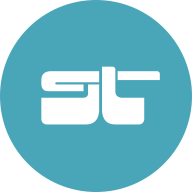Course Portfolio
This page documents courses I have taught at Arizona State University since I began teaching in 2017. My special topics courses are highlighted (which are the majority of classes I teach), but courses I have inherited and rewritten are documented as well.
Wearable Music
A video from wearable music posted by a student went viral in late 2022, receiving over 10 million views. Subsequently, we were invited to give a radio interview on KJZZ / NPR, which was syndicated on Memorial Day 2023 due to its popularity. Listen to the interview below or visit KJZZ.
(2021 - present)
Introduces students to wearable technology and wearable computing with the goal of developing sophisticated sonic algorithms and instruments with potential impact in dance, fashion, music, health, sports, or other contexts. Students develop their own wearable devices, employ sensor fusion algorithms, and learn mapping and sound synthesis techniques for creating movement-responsive instruments. Max MSP is used in tandem with VCV Rack for feature extraction experiments, including local maximum detection, quantization, accumulation/integration, windowing, entrainment, and quasi-physics.
Cody Carter preparing a demo for his second run on America’s Got Talent, January 2024.
I developed the Wearable Music course during the Covid-19 pandemic. This video accompanied a document that won the best poster award at ACM Audio Mostly 2021.
Hyperinstruments
(2018 - 2020, retired during the pandemic & replaced with Wearable Music)
Historical and conceptual overview of hyperinstruments. Students gain competency in all facets of instrument design and production, including 3D printing, laser-cutting, sensors, PCB and circuit design, soldering, networking, control mapping, feedback paradigms, and synthesis. Students may bring instruments they wish to augment to this course or may participate with the intention of designing and building something completely new. Covers fundamental electronics concepts, Arduino IDE, analog sensors, I2C and SPI, 3D modelling in OpenSCAD and Fusion 360, laser-cutting with Adobe Illustrator.
Sensor glove by Gabrielle Nacion: WiFi, RGB sensing, 9-DOF, flex sensor, and FSR.
Circuit Bending
(2017 - present)
Workshop course that introduces fundamental concepts in electronics through circuit bending and hardware hacking. Students work with Schmitt Trigger oscillators, RC circuits, binary counters and clock dividers, build passive low-pass filters, low-pass gates, opto-isolators, voltage dividers, amplifiers, distortion circuits, and envelope followers, and work with multiplexers and shift registers to make chaotic, Rungler-inspired generative sequencers. Soldering skills, 3D printing, and laser-cutting techniques are also acquired for finishing final projects, culminating in a class performance.
Partnership recruitment video for NSF AISL Proposal, submitted January 2024.
High school students learn how to use digital CMOS circuits (inverters, dividers, and counters) together in creative audio applications during the Digital Culture Summer Institute.
Synthesis & Expression
(2017 - present)
This course offers an in-depth exploration of experimental sound synthesis, sound design, and composition techniques that culminates in live performances. Students create custom sound effects and software instruments and learn generative and modular composition techniques as well as principles of feedback musicianship for creating evolving soundscapes, ambient drones, and complex beats and patterns. The course examines and reverse-engineers new technologies in the industry space, such as specialized Eurorack modules and boutique guitar pedals, while also looking back to classic analog synthesis for inspiration. The powerful particle synthesis capabilities of modern computers are also explored. Uses Max MSP and VCV Rack.
Example from Lecture on Modular Composing with LFOs.
Advanced Interactive Sound
(2017 - present)
Broad survey digital music workshop course open to undergraduate and graduate students across the university. Students design custom music effects, software, and hardware, and perform with their creations. Uses Max MSP, Gen~, RNBO, and Arduino IDE. Course covers sonic interaction design using contact microphones and audio mosaicing techniques (MUBU), building custom MIDI controllers using 3D-designed materials and specialized sensors; BLE MIDI controllers; VST/AU development, guitar pedal and embedded design using Bela Board (with RNBO) and Daisy Seed (with Oopsy/Gen~). Also covers modular and generative synthesis techniques using VCV Rack and Max MSP and wearable music (IMU).
Demonstration of audo misaiming using MUBU.
Computational Thinking for Media Arts & Sciences
(2020 - present)
Introduces students to fundamental concepts relevant for understanding computation, i.e., what are algorithms? How can they be expressed? Teaches fundamental media computing techniques via a sensor-embedded development board (Adafruit CPX) as a MIDI controller. Students learn visual programming affordances, media transcoding, generative design, procedural drawing, ASCII cryptography, feature extraction from time-series movement data, infrared communication, arcade-style game development, modularity and abstraction, genetic algorithms, geometric and numerical image transformation, interactive video, animation, and digital sound. Also covers Arduino IDE, embedded procedural programming, and parametric 3D design and printing with OpenSCAD.


